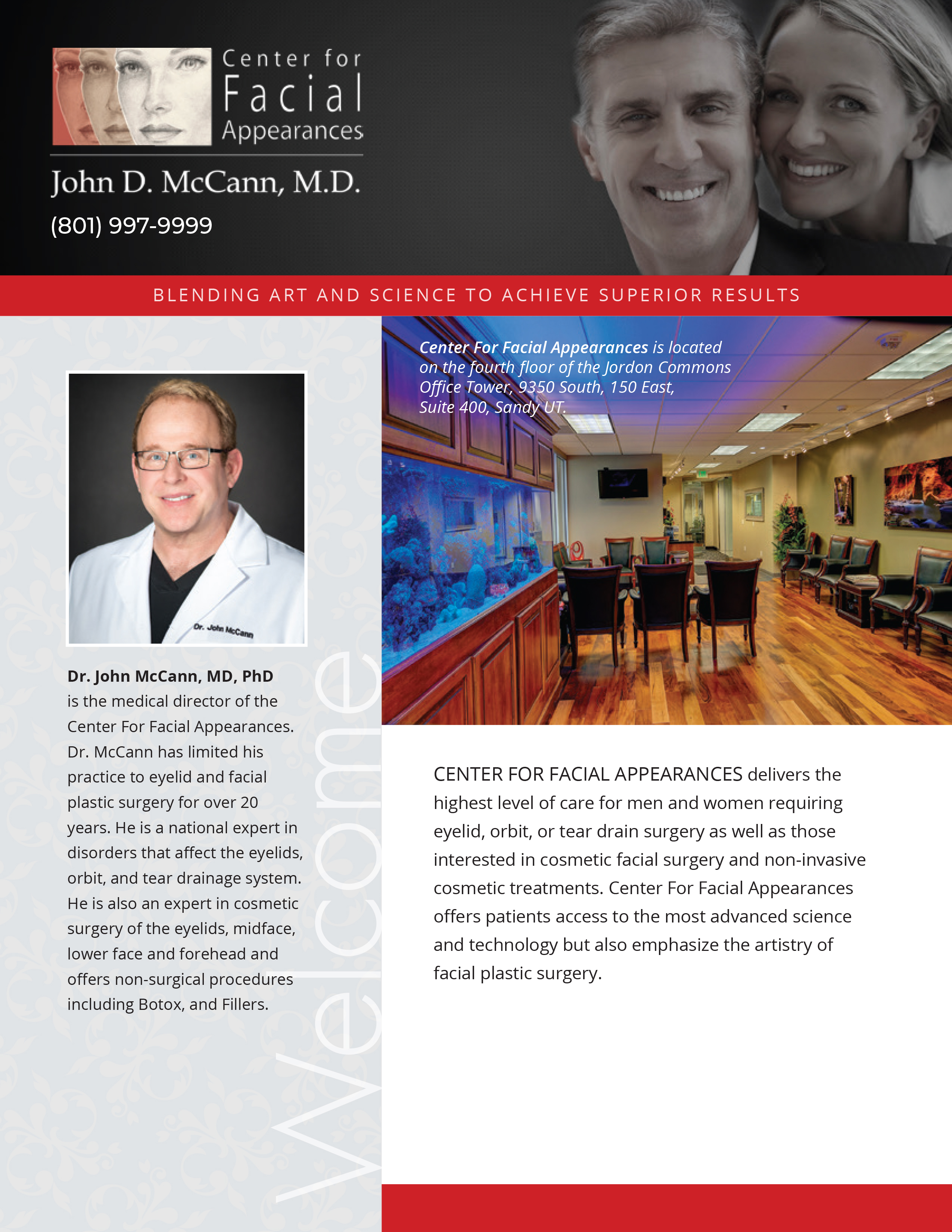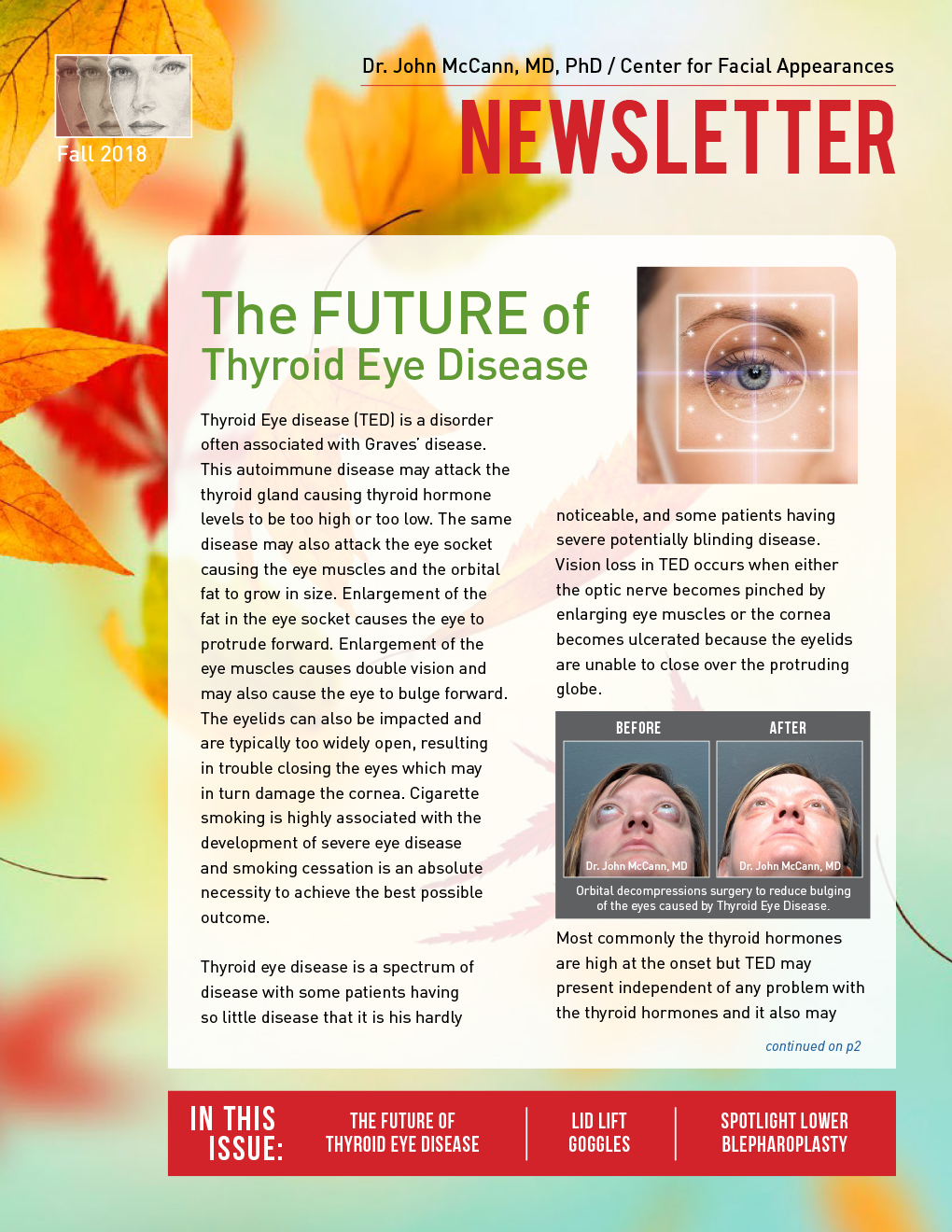Fat Transfer in Utah
Moving fat from where it is not wanted, to where it is needed
Descent of the face
When the face ages there are two changes that occur simultaneously. The best known is descent of the face; all of the facial structures tend to descend with aging. For patients over 45 years old descent of the face is commonly treated either with surgery to lift the lower face, midface, and or forehead. Alternatively, prior to the age of 55 many patients can achieve a lift using a nonsurgical, no recovery technique, called Ultherapy.
Deflation of the face
In patients who are thin or maintain a normal weight throughout life a bigger problem than descent of the face may be deflation of the face. Deflation of the face can be treated with fat transfer. Deflation is caused by loss of facial fat and this causes the face to look older by at least two different mechanisms.

Mechanism 1:
Deflation contributes to descent
When fat is lost the face tends to sag just as when a beach ball goes from fully inflated to partially inflated it also sags. So loss of facial fat contributes to drooping of the face and adding volume to the face reduces the droop.
Mechanism 2:
Deflation creates shadows
Loss of facial fat changes how light is reflected off of the face. A youthful full face is mostly convex (outwardly curved) and reflects light in those convex areas. A “baby face” is round and full so it reflects light and we subconsciously interpreted as being youthful. A deflated face has many concave (inwardly curved) sunken areas and light forms shadows in those areas. As the aging face looses fat it acquires more and more shadows. Subconsciously, we interpret those shadows as belonging to an aged face.
Filler
One way to combat facial volume loss due to aging is through the use of fillers and when the degree of fat loss is small or localized this is very effective. However, sometimes the volume loss is just too great to be affordably replaced with filler.
Synergy
Facial rejuvenation procedures are like any other surgery; you have to address the proper problem to get a good result. So you cannot fix a bad ankle by operating on the knee. Similarly, you cannot solve the problem of facial aging in a thin face by simply lifting the deflated face. Facial lifting procedures and fat transfer are typically done together in a single procedure because each addresses one of the major causes of facial aging. We call this a synergistic effect because the combined result of lifting and transferring fat is typically greater than the sum of the procedures performed in isolation.
The fat transfer procedure
Fat transfer can be performed alone but is most commonly performed with a surgical lifting procedure. It may be performed in the office operating room under local anesthesia or in an outpatient surgical center. Fat is first harvested using a standard liposuction procedure. Most commonly this fat is harvested from the stomach or inner thighs. Blood and other unwanted ingredients are extracted from the harvested fat, leaving behind pure fat tissue. Next, the fat tissue is injected into a desired area of the face to instantly add volume. The liposuction and the injections are performed through very small incisions that do not require stitching.
Where is the fat injected?
The fat transfer procedure can be used to add volume to all areas of the face. The most important areas to treat are around the eyes, over the temples, over the cheekbones, under the corner of the mouth, and in the hollow areas some people have between the cheekbone and the corner of the mouth. Fat can also be added around the mouth and along the jaw line. Prior to the procedure Dr. McCann goes over a photograph of your face and with your assistance maps out where the fat will be injected.
Results
The results look natural and require very little recovery. The incisions are small and do not typically create any visible scar. Adding facial volume instantly creates a more youthful appearance by reducing the sagging of the face caused by deflation and by filling in shadows so that the skin looks more reflective and youthful. Your body will digest some of the fat in the first few months after the procedure but some will hold on for years. In many cases the improvement is permanent.
Do I need fat transfer or a surgical lift?
It is not a debate of surgical lifting versus fat transfer as most thin faces need both lifting and the addition of volume. A simple way to evaluate this in yourself is to first look at your face in a mirror while upright, and then lie down on your back and look at your face again. The change you see between the upright position and the laying position demonstrates what can be achieved with a lifting procedure. If you have a thin face and still have many signs of facial aging when laying on your back then you may benefit from fat transfer at the time of surgical lift. It is common to address both concerns with one procedure that both lifts and adds volume. Fat transfer adds very little to the recovery from a surgical lift.
Fat transfer versus filler
Fat transfer and fillers can both be used to address loss of volume and in my opinion it is largely matter of degree. Many thin faces will loose as much as 40% of the facial fat by 55 years of age. This is a lot of fat to attempt to replace with filler. A volume equal to as much as 40 syringes of filler may be injected during a fat transfer procedure. Some of this fat will not take but when large volumes of fat replacement are required fat transfer is a superior procedure. There are some synthetic permanent fillers but I do not advocate the use of any of them as virtually every permanent synthetic filler has shown the tendency to create problems years after it is placed. The best-tolerated permanent filler is your own fat and it makes sense to be replacing the fat that is lost with your body’s own fat. Fat takes better in some places than others. For instance fat often does not take as well around the mouth as does filler. In these cases patients may still want filler injections after fat transfer.
Micro fat
A criticism of fat transfer is that it can create unnatural lumps and bumps beneath the skin. This is caused when a large clump of fat becomes visible when it takes near the surface of the skin. I use micro fat, which consist of very small pieces of fat as I feel this results in the most natural appearances. It is also safe to inject micro fat near the surface of the skin which in my experience can even help with texture changes of the skin (wrinkles).
Who is a candidate for fat transfer?
If you have experienced facial volume loss, and have some excess of fat that can be harvested by liposuction you may be a good candidate for fat transfer. The fat that is transferred to your face will remember where it came from so if your weight fluctuates significantly then so will the size of the fat transferred to your face. The best candidates have normal and stable weight for height.
Related Procedures
Dr. McCann offers additional cosmetic surgery procedures. Learn more about them.







